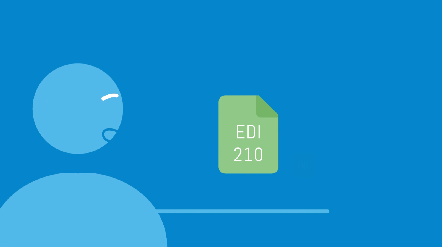How Are the Most Common Logistics EDI Transaction Codes Used?
See the transcript of the video Most common transaction sets for EDI in Transportation
As you look at starting or what to do next in Logistics EDI, it’s easy to feel a little lost. I’m going to help take the guesswork out of which EDI documents or transaction sets you should consider using in your EDI program.
LTLs or FTLs seriously looking at doing EDI or taking it a step further have probably had an important customer or partner push you to do EDI.
No one wants to lose business for not being EDI compliant.
EDI 204 Load Tenders and EDI 990 Response to Load Tenders
The first transaction sets carriers will want to have set up and running are EDI 204 Load Tenders and EDI 990 Response to Load Tenders. A Load Tender is a essentially an offer to pick up and transport a customer or partner’s load at a specific time and place.

So, if you’re not receiving EDI 204s and sending back 990s to accept the tender, there’s a good chance you are missing the boat on new business.

EDI 210 Motor Carrier Freight Details and Invoice
For example, if expediting payment to your company for services you’ve already provided sounds good to you, perhaps setting up EDI 210 for eInvoicing is the way to go.
Adding 210 to your EDI program is especially useful if you have a lot of business and therefore a lot of invoices to issue on a monthly basis.

EDI 214 Transportation carrier shipment status message
Finally, thanks to the “Amazon effect,” your customers and partners want to know the status of their shipment throughout the road to delivery. EDI 214 automatically sends the shipment status of goods en route to their final delivery.

If you have a shipment involving multiple warehouses and partner carriers, streamlining shipment updates could also save you a ton of time.
Well, I hope you’ve learned a little more about the EDI transaction sets used in transportation. You might even have an idea or two about your next EDI project.
If you’d like help getting started, we’re just a click away!
Or see the transcript of the video Most common transaction sets for 3PL EDI
For 3PLs starting out in or trying to figure out their next move in EDI, the landscape can seem a little daunting. I’m going to walk through the most commonly used EDI documents or transaction sets in third party logistics. Hang tight.
If you’re looking to win a contract to warehouse the inventory of a large-volume supplier or seller, you’ll probably also be asked (use finger quotes) to do EDI.
EDI 940 Shipping Order and EDI 945 Shipping Advice
For 3PLs, the first transaction sets you’ll want to have up and running are EDI 940 Shipping Order and EDI 945 Shipping Advice.

EDI 940 from a supplier lets a 3PL know what product to pull and when and where it must be delivered. Once the delivery has been made, a 3PL sends EDI 945 back to the supplier as confirmation that the goods made it to their destination.

EDI 947 Warehouse inventory adjustment advice
Another transaction set you could actually be required to exchange with a supplier — even from the outset — is EDI 947 Inventory Adjustment Advice.
Having enough inventory on-hand to meet purchase demand is always important. EDI 947 is a transaction set a 3PL uses to communicate changes in inventory to a supplier so shipping delays due to back orders can be avoided.
Suppliers generally determine how often they should receive Inventory Adjustment Advice, or what events should trigger sending it.

EDI 856 Advance Ship Notice
This next transaction set will help you add value to customers and partners. If it’s not already being transmitted by the supplier or seller to the buyer, 3PLs should add EDI 856 Advance Ship Notice to their list of EDI services.

The Advance Ship Notice or ASN gives the buyer a heads-up as to when goods are about to be dispatched from the warehouse along with codes to track delivery.
So, now that you know a little more about the EDI documents used in third-party logistics, what EDI project will you start next?
As always, let us know if you need some help getting started. We’re just a click away!
Commonly Used Logistics EDI Transaction Codes

![]() Some 3PLs offer advance ship notices (856) directly to buyers if the buyer’s contact data is passed to them through a warehouse shipping order (940).
Some 3PLs offer advance ship notices (856) directly to buyers if the buyer’s contact data is passed to them through a warehouse shipping order (940).
![]() Before goods are delivered
Before goods are delivered
![]() After goods are delivered
After goods are delivered
The Transaction Codes Used in Logistics EDI
represent the business documents exchanged among

Dispatchers

Warehouse managers

Sellers

Buyers
All Logistics EDI Transaction Codes Signal a Specific Business Activity or Their Response / Confirmation / Acknowledgment.
Documents like bills of lading, load tenders, and shipping notifications summarize these activities.

In the Past
In the past, logistics businesses had to manually process these documents.

Today
Today, logistics EDI automates the data exchanged and processed in these transactions.
In the United States, the most widely used format for logistics EDI transaction codes is X12.

X12 fundamentals

Free X12 file viewer







